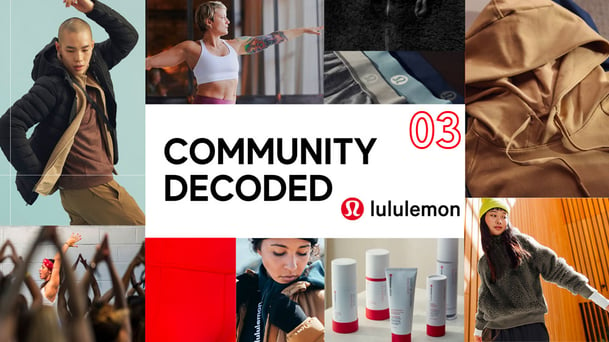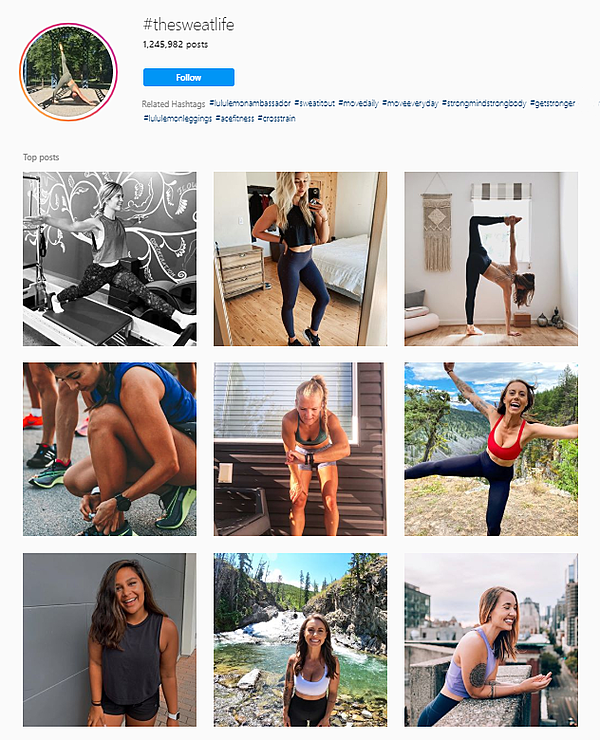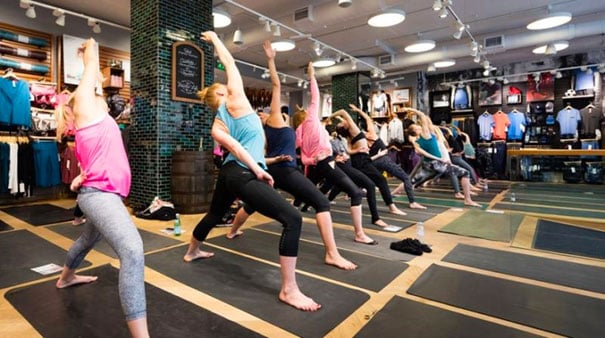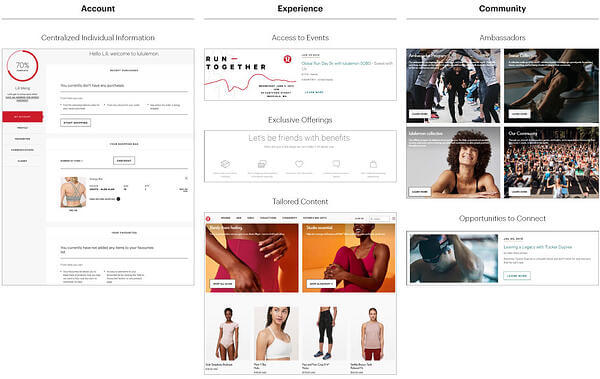
This is Community Decoded #3, our monthly series on brands who are switching to a community-first model. If you're new here, read up on our Glossier and Nike breakdown.
This month we're analysing Lululemon, one of the world's biggest athleisure and community-led companies.
“Igniting a community of people to sweat, grow, and connect”, that's Lululemon's goal. Beyond the corporate mission statement, Lululemon's CEO has repeatedly said their brand's best asset is the direct and authentic relationship they have with their customers.
We’ll see how all this translates into:
- A clear community purpose
- A tiered community built on internal ambassadors
- A focus on in-store community events
- A switch to at-home & digital engagement?
- A loyalty program tailored to grow their community
1. A clear community purpose
If this isn't your first time reading our blog, you know a central part to any community strategy is finding your “why”, i.e. setting a purpose that shows why people should join your community.
LuluLemon has one of the clearest community purposes of any fashion brand I know today.
In short, their The Sweat Life community wants to encourage people to “sweat, grow and connect”. And the message seems to work: the brand has millions of followers and +1M customer publications on Instagram.

One key best practice from Lululemon on socials is that they reply massively to comments and encourage people to post daily workouts.
This way, they're able to generate mass UGC of real people who present authentic and mostly attainable images of what living LuluLemon’s “Sweat Life” can help people achieve.
If we were Lululemon, we’d add this UGC on product pages and on their website (just like Nike is starting to do). They have a vibrant community of global fans but (for now) you can’t find that social proof on their website.
2. A tiered community built on internal ambassadors
Last time, we analysed how Nike segments its community into subgroups based on activity, location... etc. Unsurprisingly, Lululemon does things differently and tiered their community by role:
- Guests
Customers who join community events, in-store classes, and share UGC online. - Lululemon team
Staff ambassadors who engage and promote the community locally. Usually store employees who run classes, local social media accounts, and share their fitness stories on the brand's website and socials. - Store ambassadors
Mostly yoga or fitness teachers who run in-store or digital classes. They're becoming huge within the community. Similar to what Peloton is doing with their fitness instructors. - Global ambassadors
Pro athletes who rep the brand globally and show up during Sweat Festivals and brand endorsements.
The way Lululemon smartly leverages its internal team is the key differentiator here.
The brand has 450+ stores globally, which they're using to build local communities and directly connect with customers around the world. A quick linkedin search shows most Store Managers are Community Ambassadors too. Added benefit for the brand is this also limits employee turnover, and Lululemon is ranked 70 places ahead of Nike in the Forbes World's Best Employers list.
3. A focus on in-store community events
Lululemon stores are increasingly becoming community meetup hubs. Daily “Sweat with Us” yoga, fitness, and health classes let customers and fans bond with people just like them:
- Their latest Paris store is essentially a yoga center where customers can try on apparel.

- Their Chicago flagship offers 2 fitness studios, a meditation space, workspace and bar. Customers get to try out gear at different classes.

- They also host annual SweatLife Festivals, bringing together over 6,000 customers in local chapters.

Getting people to meet in real life is the most powerful thing you can do for community engagement.
At TokyWoky, we’ve found that the annual churn of members who have met up with the brand or each other in person is virtually 0%.
Here are some community events you can test:
- Invite highly engaged customers to store (re)openings
- Behind the scenes meetups / video chats with the Community/Product/Design/Marketing team
- Online day dedicated to your community with meet up sessions
- Co-creation workshops prior to new launches, new store designs, post-COVID reopenings...
- Meet and greet with your brand influencers...
4. A switch to at-home & digital engagement?
If real life events were Lululemon's strength in pre-pandemic times, they're facing an obvious challenge in adapting to a more digital world with COVID-19 and the rise of at-home fitness.
In the past few months, their team was able to quickly switch to free online workouts and yoga classes to keep their community engaged and active in times of social distancing. But all in all, this no longer makes them stand out from the many sports and apparel brands who’ve been offering the same thing during the pandemic.
However, the brand recently acquired Mirror, a home-fitness startup. People can already follow classes taught by Lululemon ambassadors.
If they can successfully integrate this with their community offering, in a similar way to the Peloton model (which we’ll analyse in an upcoming episode), Lululemon would open up a new strong engagement channel.
Read more: why community-driven brands succeeded where others failes during COVID-19
5. A loyalty program tailored to grow their community
Lululemon’s loyalty program, which launched in 2018, is an interesting one to study:
- It’s a paid annual subscription (128$)
- Members get products, access to curated events, community workout classes, free fast shipping
- The program has been tested locally in 4 major cities and is now expanding in other test markets
The subscription model and exclusive experience-based rewards works for the brand. And it's no coincidence if half of the program incentivizes loyal customers to join and engage with its community.

A next step for Lululemon and similar brands could be to reward customers for every positive action beyond purchases. It's the quickest way their community can have the biggest impact on tangible business goals like acquisition, on-site conversion, and retention.
Some actions beyond purchase you can start to reward:
- Coming to in-store/online events
- Following your brand on social media or signing up for a newsletter
- Posting UGC (that can be used in social ads or on product pages)
- Writing a review
- Giving feedback on new products, services or stores...
We've written more about this here: how brands are turning loyal customers into brand advocates at scale
Have a community project you want to get started with? Read how to define your community project.
See you next month with a brand new episode of Community Decoded!


.jpg?width=800&name=Get%20the%20Community%20playbook%20(1).jpg)

.png)
